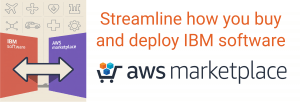Enhance Your Systems and Software Development Environment
Continuous Improvement With Full Traceability Across Engineering Data
Traditional engineering practices no longer have what it takes to efficiently develop competitive products in a timely fashion. In order to innovate faster and compete with countless industry rivals while maintaining safety and compliance regulations, organizations need to adopt an intelligent continuous engineering model. It’s time to embrace an end-to-end management approach to systems and software development. IBM’s Engineering Lifecycle Management (ELM) suite uses artificial intelligence (AI), automation, and analytics to help meet stringent compliance regulations, reduce risk, and accelerate ELM optimization.

The Cost of Noncompliance
In industries with increasingly stringent compliance regulations, getting the products built and the project completed isn’t enough. Failing to meet regulatory compliance standards costs organizations billions every year, with financial impacts continuing to rise. These costs come from more than just fines, but actual damage to business disruption and loss of productivity.
Organizations lose an average of $4 million in revenue due to a single non-compliance event – but it’s only the tip of the iceberg. According to a recent study sponsored by Globalscape, the average cost of non-compliance can range from $14 million to a maximum of almost $40 million in revenue coming from:1
- Fines, penalties, and other fees
- Productivity loss
- Business disruption
- Revenue loss
- Reputation damage
The IBM ELM suite’s lifecycle traceability provides a much simpler path for integrating engineering processes to compliance and regulatory requirements with out-of-the-box tailoring.
Reduce Risk of Human Error
Organizations can’t risk having engineering processes done manually. A single error in the product or system development lifecycle can have devastating consequences. It’s critical that teams have the tools to automatically maintain transparency and traceability across the entire development team to effectively manage changes, ensure theproduct meets all requirements and is fully tested.
-
- By automating the engineering lifecycle management process, engineering teams can:
2
- Reduce time to market and lower costs
- Increase transparency, scalability, and accountability
- Deliver better customer experience and meet SLAs
- Enable compliance with regulations and audit trails
- Increase operational efficiency and minimize human error


Evolve Processes andPractices Faster
Pressure to deliver products to market faster, with
more features that perform perfectly and cost less to
develop, requires that businesses use the right
engineering lifecycle management tools to respond to a
dynamic market.
- IBM’s ELM suite provides an integrated, end-to-end solution that offers full transparency across all engineering data from:
- Requirements Management
- Testing Management
- Workflow Management
- System Design Management
What Can You Do With IBM’s ELM Suite?
As systems and software development increases in complexity, engineering tools and processes must scale adjacently to support broader supplier networks, collaboration across dispersed teams, and evolving compliance regulations.
- IBM ELM suite provides a single source of truth to deliver data traceability, which allows customers to do the following:
- Manage complexity
- Strengthen decision-making
- Accelerate delivery
- Improve quality
- Foster continuous collaboration
- Streamline compliance


Extend the Value of ELM
IBM’s Engineering Lifecycle Optimization (ELO) portfolio are extensions of the ELM suite that optimize the linked data through automated reporting, impact analysis across the lifecycle, and interface with third-party tools.
- What Can ELO DO For You?
- Better decisions: Visualize, analyze, and empower action from engineering lifecycle data coming from various tools.
- Quality reporting: Build high-quality custom reports easily across the entire ELM portfolio of products and third-party products.
- Embrace best practices: Define and publish process descriptions to integrated best practices and aid in complying with standards such as ISO 26262, Automotive SPICE, and CMMi.
- Leverage third-party tools: Customize your
development environment by using
open-standard-based integrated adapters to
connect to third-party lifecycle tools.
- Which ELO offering is right for you?
- Engineering Insights
- Publishing
- Method Composer
- Integrations Adapters
Today’s software and product development teams are pressured with creating high-quality assets that meet safety-critical compliance and regulatory standards, are price-competitive, and delivered quickly. Contact 321 Gang today to maximize ELM effectiveness with a holistic view across the entire product lifecycle.
Maximize Innovation With 321 Gang and IBM
As a certified IBM Platinum Business Partner, 321 Gang works with enterprises to accelerate engineering and development of large, engineered systems. Through the use of Lean-Agile principles and SAFe, the 321 Gang Consultants work with the industry leading system builders of embedded software on best practices for requirements management, model-based systems engineering (MBSE), test management/- verification and validation, and traceability for compliance and reporting. The 321 Gang team understands the regulatory requirements and issues they are facing. 321 Gang’s consultants are software & systems engineers — each one with extensive product development experience.
1Globalscape, “The True Cost of Compliance With Data Protection Regulations,” Dec 2017.
2Kissflow, “How an Automated Process Outshines a Manual Process,” Jan 2021.

